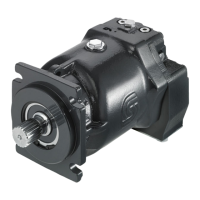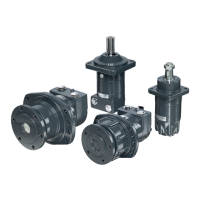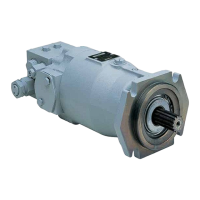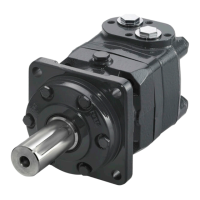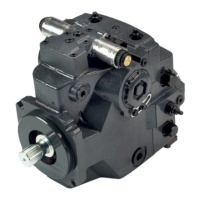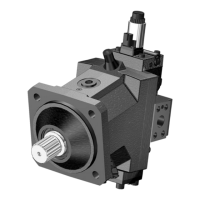Overview
This section defines the operating parameters and limitations for TM Motors with regard to output
speeds and pressures. For actual parameters, refer to the operating parameters for each displacement.
Output speed
Minimum speed is the lowest output speed. Operating below minimum speed limits the system can be
unstable.
Rated speed is the highest input speed recommended at full power condition. Operating at or below
this speed generally yields satisfactory product life.
Maximum speed is the highest operating speed permitted. Exceeding maximum speed reduces product
life and can cause loss of hydrostatic power and braking capacity. Never exceed the maximum speed
limit under any operating conditions.
Warning
Unintended vehicle or machine movement hazard.
Exceeding maximum speed may cause a loss of hydrostatic drive line power and braking capacity. You
must provide a braking system, redundant to the hydrostatic transmission, sufficient to stop and hold the
vehicle or machine in the event of hydrostatic drive power loss.
System pressure
System pressure is the differential pressure between system ports A & B. It is the dominant operating
variable affecting hydraulic unit life. High system pressure, which results from high load, reduces
expected life. Hydraulic unit life depends on speed and normal operating—or weighted average—
pressure that you can only determine from a duty cycle analysis.
Applied pressure is the chosen application pressure in the order code for the motor. This is the pressure
at which the drive line generates maximum pull or torque in the application.
Rated pressure is the design pressure for the motor. Applications with applied pressures at or below this
pressure should yield satisfactory unit life given proper component selection.
Maximum pressure (peak) is the highest intermittent pressure allowed under any circumstances.
Applications with applied pressures between rated and maximum require factory approval with
complete application, duty cycle, and life expectancy analysis.
All pressure limits are differential pressures referenced to low loop (charge) pressure. Subtract low loop
pressure from gauge readings to compute the differential.
Case pressure
Do not exceed rated case pressure under normal operating conditions. During cold start, keep case
pressure below maximum intermittent case pressure. Size drain plumbing accordingly.
Caution
Possible component damage or leakage.
Operation with case pressure in excess of stated limits may damage seals, gaskets, and/or housings,
causing external leakage. This condition may also affect performance since charge and system pressure
are referenced to case pressure.
Service Manual
TMM Transit Mixer Axial Piston Motor, Size 070/084/089
Operating parameters
12 L1211037 • Rev AC • Apr 2014


